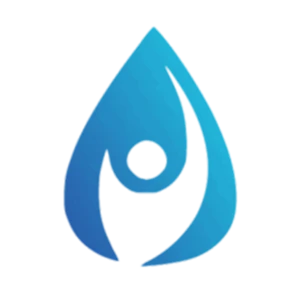PRP: Learn What It Is & How It Benefits Your Health
Treat Many Conditions With Your Own Blood Cells
Injections with platelet-rich plasma (PRP) are becoming increasingly popular for treating a broad range of conditions, ranging from sports injuries to hair loss. This form of treatment utilizes the patient’s own blood cells to speed up recovery in a particular area.
PRP therapy is a viable method for potentially restoring tissue health after trauma or joint injuries. This treatment has also seen success in aiding male pattern baldness, accelerating hair transplant progress, and supplementing other cosmetic appointments.
It may take several weeks to observe the effects of PRP on joint damage, and half a year to see progress in scalp instances; this progress is not lasting, however, so further treatments may be required, based on the healthcare provider’s instructions.
The safety and efficacy of PRP stem from the fact that it uses components of a patient’s self-tissue, often administered independently or integrated with other treatments.
PRP to Treat Pelvic Disorders
Promoting New Growth With PRP
PRP treatment can also enable participation in higher-level physical activities, such as skiing, jogging, and riding horses. This treatment often drastically diminishes or totally eradicates issues like urinary incontinence, pelvic pain, painful intercourse, loss of sensitivity, and vaginal dryness or skin issues.
Pain Relief and Healing Through PRP: A Non-invasive Approach
PRP therapy involves injecting the patient’s own highly concentrated platelets into or near the damaged area. These platelets are important in aiding the healing process of injured tissues, broken bones, and wounds, and account for a small percentage of our blood. However, after a simple in-office process, the patient’s platelets are up to 95 percent concentrated and ready to be injected.
The use of a patient’s own blood, in tiny amounts, is able to promote healing and reduce pain for various conditions including osteoarthritis in the shoulder, knee, spine, or hip; ankle and ligament sprains; anterior cruciate ligament (ACL) injuries; tennis elbow; back and neck injuries; tendonitis; rotator cuff tears; and chronic plantar fasciitis. Additionally, this practice can be used to give the skin a fuller and more elastic appearance — like with a PRP facelift — and lessen the appearance of scars and stretch marks.
The body’s initial response to a soft tissue injury is to direct platelets from the blood to the site of the injury for repairs, as the platelets hold hundreds of proteins known as growth factors that are necessary for healing. To further improve wound healing, PRP injections use the patient’s own blood with a higher platelet concentration than in regular blood, resulting in a concentration of growth factors 5-10 times richer. This option is also considered safe, as there is no risk of transmissible infection.
How PRP and Stem Cell Therapy Work
Using a method similar to a laboratory test, a quantity of blood is extracted from the patient in PRP therapy. This is then subjected to a high-speed centrifugation process to distinguish the platelets. Carefully and methodically, these platelets are then inserted into the affected, sore area. It may take many injections over a few months for the patient to feel total alleviation of pain and to be restored. Studies suggest that only one or two injections may be enough for the patient to attain this point, thus enabling them to get back to their routine activities.
MRIs and ultrasounds have confirmed that PRP therapy has the potential to allow patients to heal. Utilizing this treatment early on can prevent the need for more extensive medical procedures, such as surgery, anesthesia, and hospital stays, and provide a faster recovery period, so patients can return to their activities more promptly.
Adding exosomes to a PRP treatment can significantly improve the healing process and extend its results. While PRP treatment can usually last for 6 months to 2 years, exosomes sourced from umbilical cords of fully screened babies and mothers can extend the results of the procedure up to 3 to 5 years. It is crucial to ensure that the exosomes used are ethically harvested from live birth, healthy babies and mothers. By incorporating these ethically sourced exosomes into PRP treatments, patients can enjoy longer-lasting results and improved tissue repair.
Improve Your Own Health With PRP Therapy
Some of the potential benefits of PRP therapy include:
Accelerated healing:
Injured tissue can heal faster when treated with PRP therapy. In addition, it is believed that PRP enhances the body’s natural healing process, resulting in faster repairs.
Improved mobility and flexibility:
PRP therapy can help improve range of motion and flexibility. In particular, PRP therapy has been effective in treating rotator cuff tears and other shoulder injuries.
Tissue regeneration:
With PRP therapy, healthy tissues can also be generated to replace damaged and diseased tissues. This can potentially lead to the improvement of several physical conditions.
Pain relief:
PRP therapy has the potential to be used as a pain reliever. As part of the natural healing process, the platelets in the PRP solution release proteins that can relieve pain and reduce inflammation, helping to speed up the recovery time from injuries and chronic conditions. Additionally, research has found that platelets also release hormones such as serotonin and endorphins, providing the patient with further pain relief.
Contact us today to learn more about how PRP therapy can help promote healing and pain relief, putting you on a road to better health.
